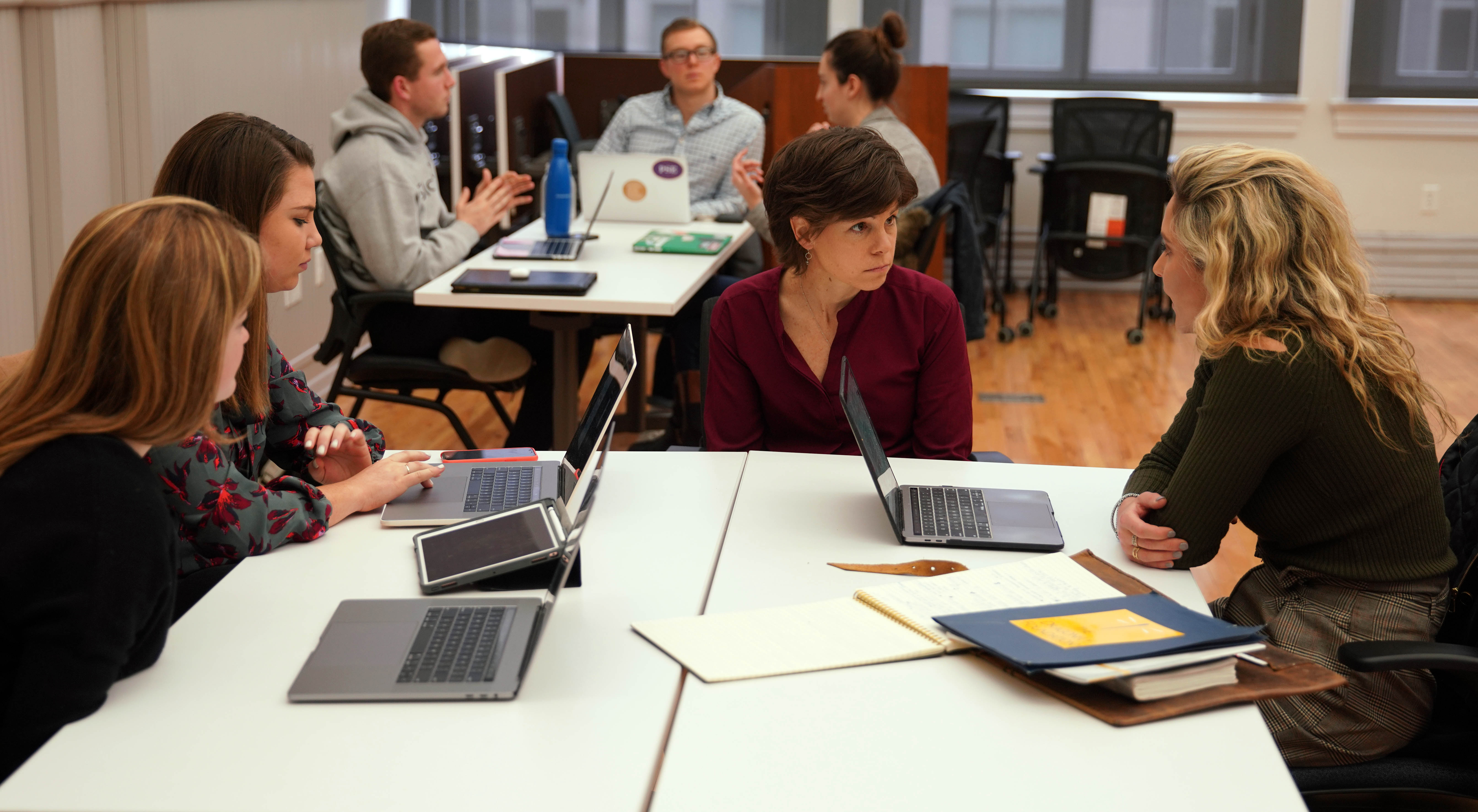RedHawk Launch Accelerator announces new class of student-created businesses
Accelerator program based in Cincinnati's Union Hall


Accelerator program based in Cincinnati's Union Hall
For Christie Currie, it was a diagnosis. “When I was a freshman in high school, I was diagnosed with cancer. So I started thinking about how hard that was for me.”
For Brian Calvey, it was the mornings after a night of celebrating with friends. “We weren't performing at our best, so we figured we could do something about it.”
For Akinda Johnson, it was wanting to put on swimwear, but growing up in Wisconsin. “You have basically three months out of the year in which to wear a swimsuit.”
For Kamilah Dotson, it was time spent in study hall not studying schoolwork “I'm supposed to do homework in study hall, but my friend and I were just on YouTube, learning eyeliner and how to do cat eyes, and it just really intrigued me.”
While the students had different paths, they all led to the Institute of Entrepreneurship’s RedHawk Launch Accelerator program, designed to help them learn the ins and outs of starting their own business. As assistant clinical lecturer Mark Lacker pointed out, that’s not something they’re going to learn in a regular classroom. “Those processes do not match the reality of how entrepreneurs really start businesses. There's no textbook. There's no weekly assignments. There's no papers to turn in, there's none of that. It is a process of mentorship, collaboration, learning from others and figuring things out as you go.”
“First step is to get them out of Oxford. Second step is to treat it exactly like the process would go if you are going to start your own business from scratch. In order to do that, we work in Cincinnati at Union Hall from 3 to 8 every Monday,” Lacker explained. “Students in any walk of life on campus can do this, regardless of major. The only prerequisites are you’ve got to have or be working on a prototype and have the ability to build it.”
Currie and her team are working on Zandaland to help young children in hospitals. “It's a digital platform that connects caregivers and pediatric cancer patients in children's hospitals. It has different features to help educate, distract and connect patients as they go through treatment. The goal is to use fun and learning to engage kids to take an active role in their healing and coping process.”
Johnson is creating new styles of swimsuits in her Akinda Mayanna line. “I found that there is a need for suits that people can actually wear year round and so I can start wearing my suit size bodysuits out and about in the winter time. I wanted to wear it more often because it’s often an investment. So if you can't wear it that often, what's the point?”
Calvey is trying to help people avoid hangovers, or help to recover more quickly, with Cydekick. “We just think that a lot of students could benefit from this, because we see a lot of wasted potential on campus, people going out and people want to enjoy the social scene on campus,” he said. “But you don't want to do it at the expense of your studies and your extracurricular activities. We want people to be able to enjoy the best of both worlds.”
Dotson’s KCD Cosmetics is her attempt to reach what she considers an underserved market. “I wanted to fix it because I am a woman of color, and I wanted to make sure that people who look like me can find shades everywhere,” she noted. “But I also believe that our businesses, our products should uplift the community that we live in, and we should give that back.”
Lacker said the process of building a business is the learning process in the accelerator. “Students get further down the line, do more real validation, do harder validation. There's lots of pivots. They have to go talk to real potential customers and they adjust to what they’re hearing and adjust their business model and the prototypes and continue to build, all at the same time as taking their other classes.”
A total of seven teams make up this year’s cohort, the fourth so far. Lacker said that if past experience is an indicator, this year’s teams have a chance to go far. “We have put three different teams in three different startup accelerators here in Cincinnati, which is unheard of at 22 years old,” he said. “This cohort’s starting points are more advanced than any of the previous three.”
Rico Grant, founder of CrownMob Inc. and a mentor for the class, said the RedHawk Launch Accelerator is exactly the sort of challenge these young entrepreneurs need. “The money is on the line and you have to truly put into it what you're looking to get out of it,” he explained. “I think that makes it harder. I think it makes it more stressful. I always tell founders that accelerator programs are meant to stretch you out to the point where you snap, put the Play-Doh back together, and stretch you out again. Bend but never break, that’s the mentality.”

